3 Ways to Make Your Garden More 'Climate Resilient' — For a Space That Thrives Year-Round
Easy ideas to adopt to set your garden up for success, no matter the season
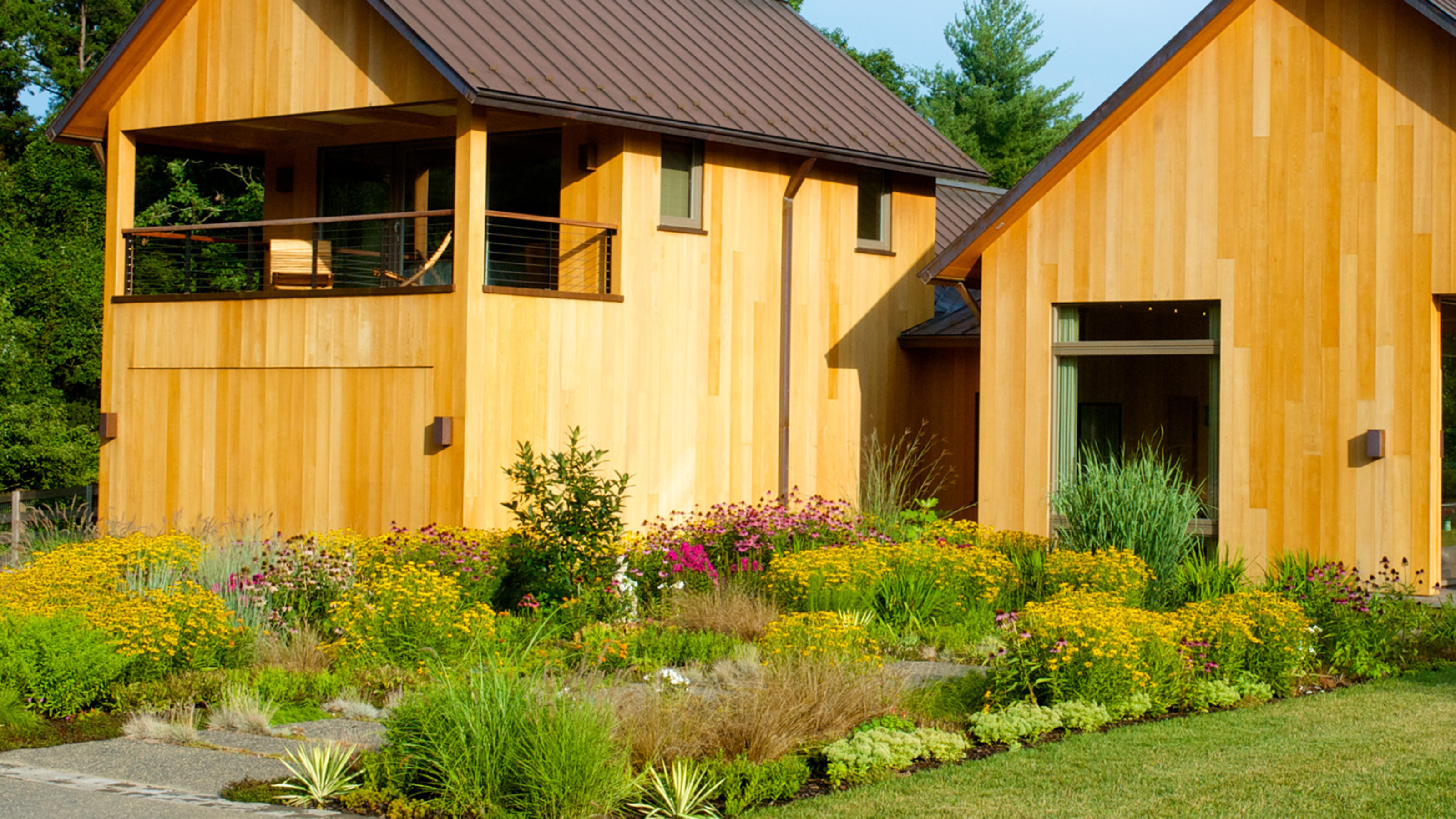

Practically no aspect of life has been left untouched by the climate crisis, and that includes our gardens. Dramatic highs in temperatures and unpredictable, rapid changes to the environment are quickly becoming the new normal, and our gardens are suffering the consequences.
While these changes may leave you feeling helpless, regaining control over your direct surroundings is a helpful and tangible way to feel more connected to the environment in a positive way. This is why gardeners and landscape designers are becoming increasingly interested in building climate-resilient gardens.
Best of all, there's no need for a complete refurb to achieve this. By adopting a few smart landscaping ideas and integrating them into your existing garden design, you'll be well on your way to creating a garden that thrives year-round, no matter what gets thrown at it.
What Is Climate Resilient Gardening?
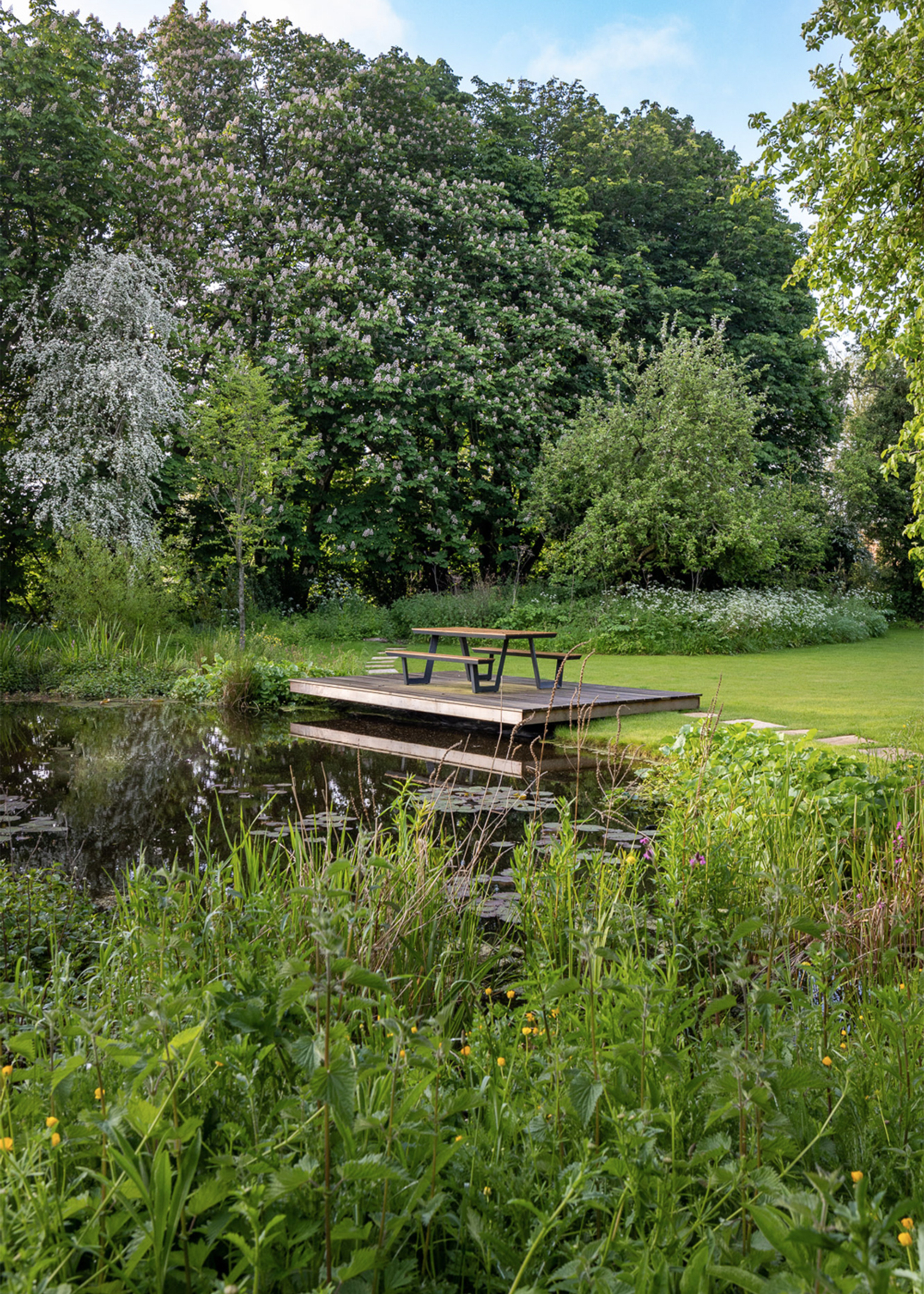
Designing a garden that is in harmony with its surroundings is the key to climate resilience.
"A climate-resilient garden is one that’s designed to withstand and adapt to the effects of a changing climate," explains Mark Latchford, director of landscape design at HollandGreen.
The dramatic and tumultuous effects of global warming can be noticed most vividly in its environmental effects, which include hotter summers and more extreme exposure to the elements.
Just one of the many consequences of this climate crisis is the dramatic effects it has on our modern gardens. With increasingly higher temperatures than we've ever experienced before, many of our gardens are not designed to survive in these conditions. Even if they can cope with exposure to the sun, they will fail during the cool, wet winters. This is why climate-resilient gardening is so important.
"This means it can cope with extremes — hotter, drier summers, heavier rainfall, flash flooding, and generally more unpredictable weather patterns," Mark Latchford says.
The Livingetc newsletters are your inside source for what’s shaping interiors now - and what’s next. Discover trend forecasts, smart style ideas, and curated shopping inspiration that brings design to life. Subscribe today and stay ahead of the curve.
But beyond just 'coping,' this approach helps keep your garden in consistently desirable conditions. As landscape designer Katherine Aul Cervoni explains, "It’s not just about surviving extreme conditions — it’s about helping your garden thrive despite them."
Plus, this garden trend does much more than just keep your garden looking good through the seasons; it also helps to support local wildlife and is a more generally sustainable approach to gardening.
Mark Dwelly, head gardener at Audley Stanbridge Earls, explains, "It’s also about looking after our local wildlife and not using up too many resources."
This approach to your garden will also make your life easier, helping you to cut down on the time spent caring for your plants. "Having a garden that's ready for anything means it will stay healthy and beautiful — no matter what the weather throws at it. It also means you won’t have to spend as much time looking after it, and you’ll be helping to save water while supporting all the local wildlife in the area," says Mark Dwelly.
Led by award-winning landscape designer Mark Latchford, the HollandGreen team have honed their skills working on projects from urban gardens to country estates, and from waterside landscapes to international projects. As either an independent Landscape Design Studio or side-by-side with the wider HollandGreen Architecture and Interior Design teams, we approach each project with a holistic design vision that leads to beautiful outdoor spaces.
1. Change Your Water Usage
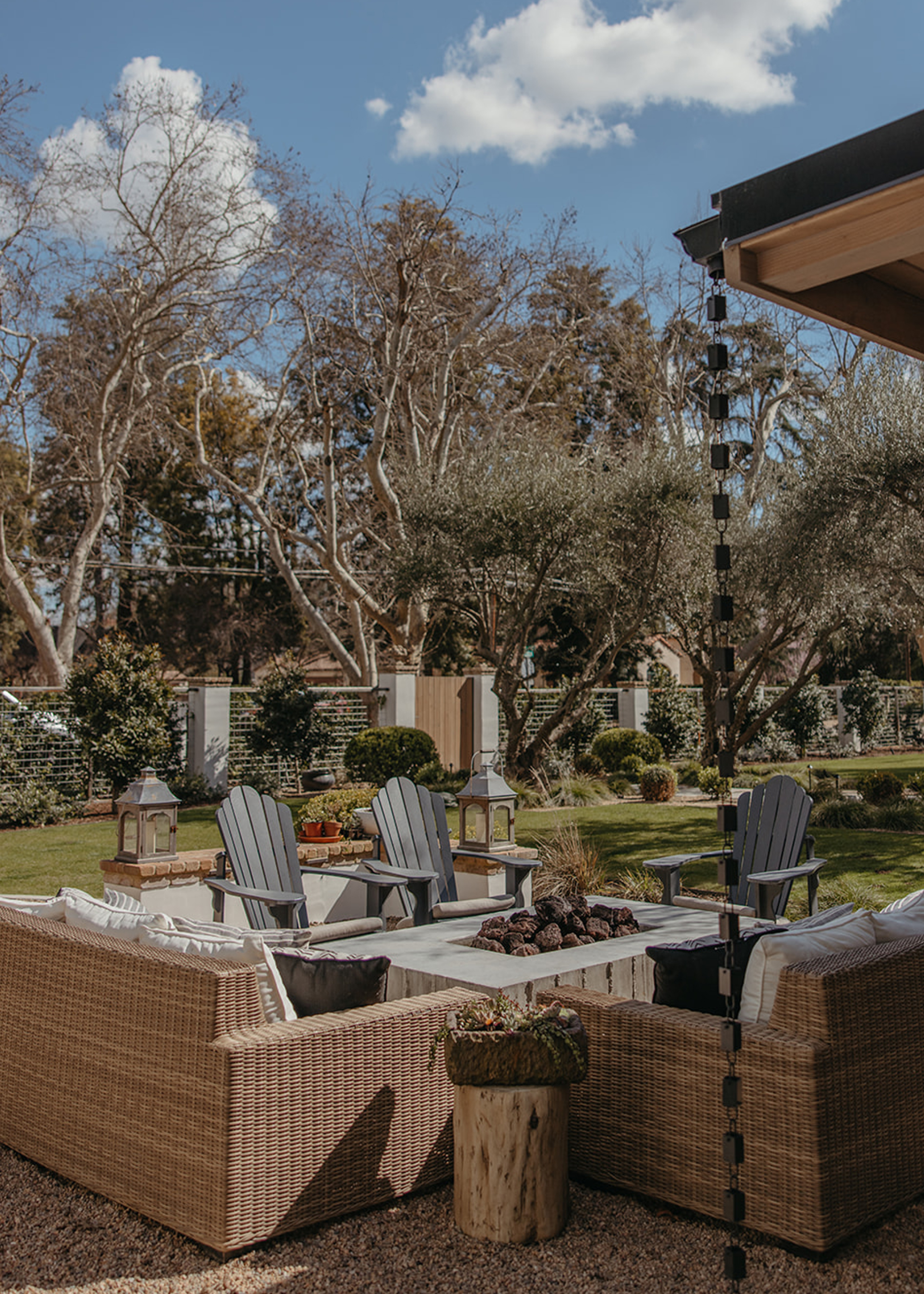
Connect your rain chain to a tank for a beautiful, and effective rainwater irrigation system.
One of the most helpful ways to begin your journey to building a more climate-resilient garden is to adopt a mindset shift regarding water use. Reducing the amount of water you use to keep your garden looking its best will not only help you build a more robust garden but also have a wider, positive environmental impact. This can be achieved with a thoughtful combination of planting choices and additional design features.
"Water conservation is another important element," comments Mark Latchford, "Installing a rainwater harvesting system — usually collecting runoff from roofs into tanks — means you can store water during the wetter months and use it for irrigation when it's dry. It's a great way to reduce reliance on mains water and make your garden more self-sufficient."
This helpful trick can also help you save money on your bills, allowing you to utilize the natural resources given to us instead. You could even use the Japanese rain chain method to make it extra design-forward.
Or, Katherine suggests, "Capture and manage water with rain gardens, permeable materials, or water barrels."
We love this Slimline Water Butt complete with tap and lockable lid from Amazon.
Alongside an intelligent, sustainable irrigation system, choosing plants that require less water in the warmer months can also help to cut down on your water usage.
Mark Dwelly says, "Save on water: Pick a good mix of local plants and ones that don’t need a lot of water in summer, but can still withstand rain if the weather turns — lavender is a personal favorite!" He continues, "Other plants that are more versatile with different types of weather are poppies and catmint."
Incorporating plants that can withstand heat and cold means you won't have to lose sleep over protecting your precious blooms and shrubs throughout the seasons.
Another critical aspect of building a more water-efficient backyard revolves around soil quality.
"Improve your soil composition to reduce watering frequency: Adding things like mulch and compost to your soil helps it hold onto moisture for longer in the warmer months," says Mark Dwelly, "For the rainy season, you can also create little dips or areas to catch/drain rainwater (away from footpaths to avoid twisted ankles!), which helps stop flooding."
2. Switch Your Flooring for Gravel
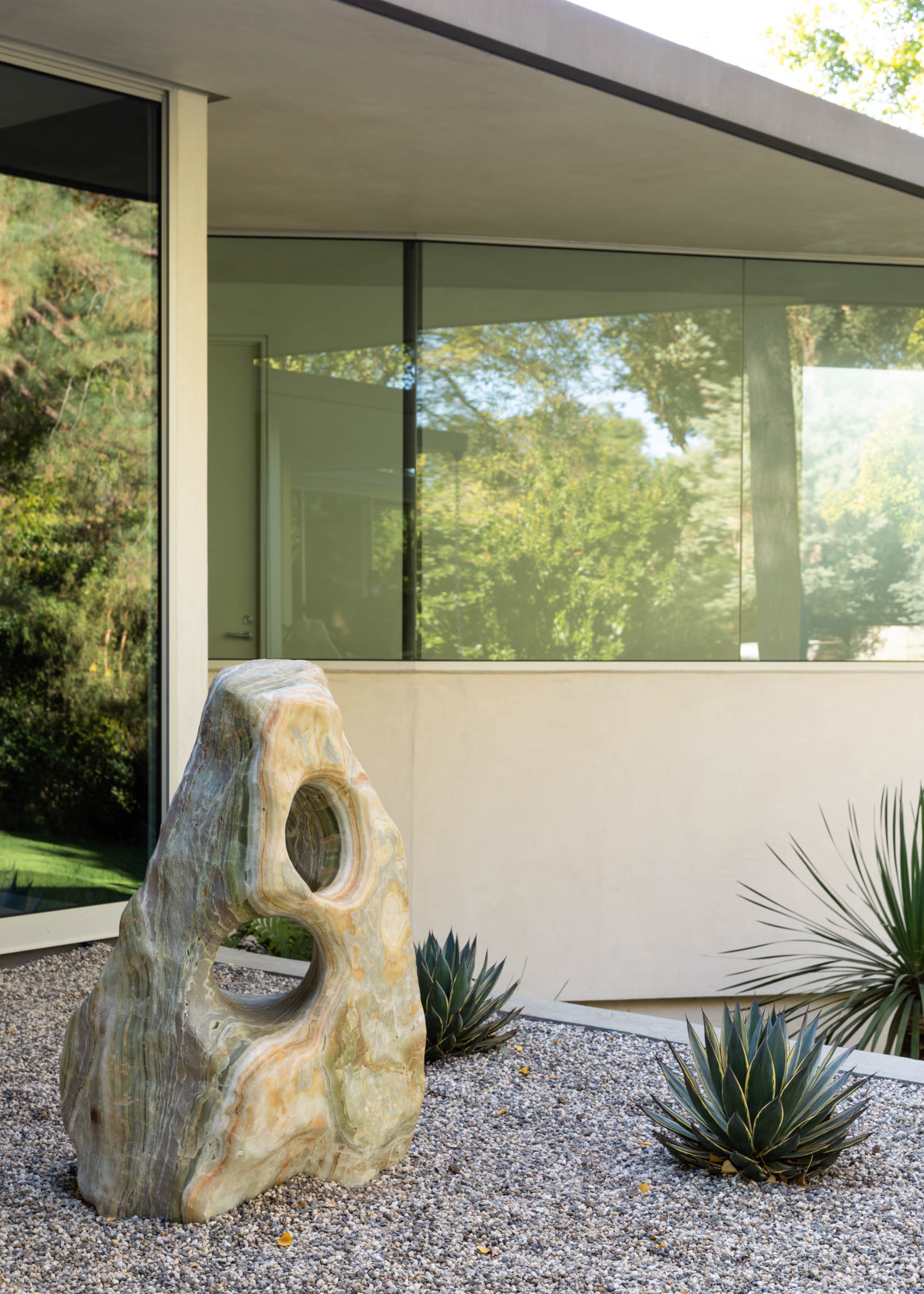
Gravel is a sustainable, and attractive, flooring solution for your garden.
If you're looking for dramatic results, making a few dramatic changes is always a good way to start. And there's no place better to begin than working ground up.
After all, one of Mark Dwelly's biggest tips is this: "Opting for gravel paths instead of solid paving." We reccomend this 20mm Gravel, Bulk Bag from B&Q.
Not only will this change bring you a step closer to achieving that dreamy, Mediterranean garden look, but it can also drastically improve how your garden responds to changes in the climate.
"There are two reasons for this," Mark Dwelly explains, "It helps rainwater soak away properly, which limits flooding during rainy seasons. This, in turn, promotes better moisture distribution in your soil and helps it build reserves ahead of the warmer, drier months. In the Summer months, solid paving could promote dry patches in your garden by making its surroundings really hot, whereas gravel paths provide better heat dispersion."
3. Smart Flower Choices
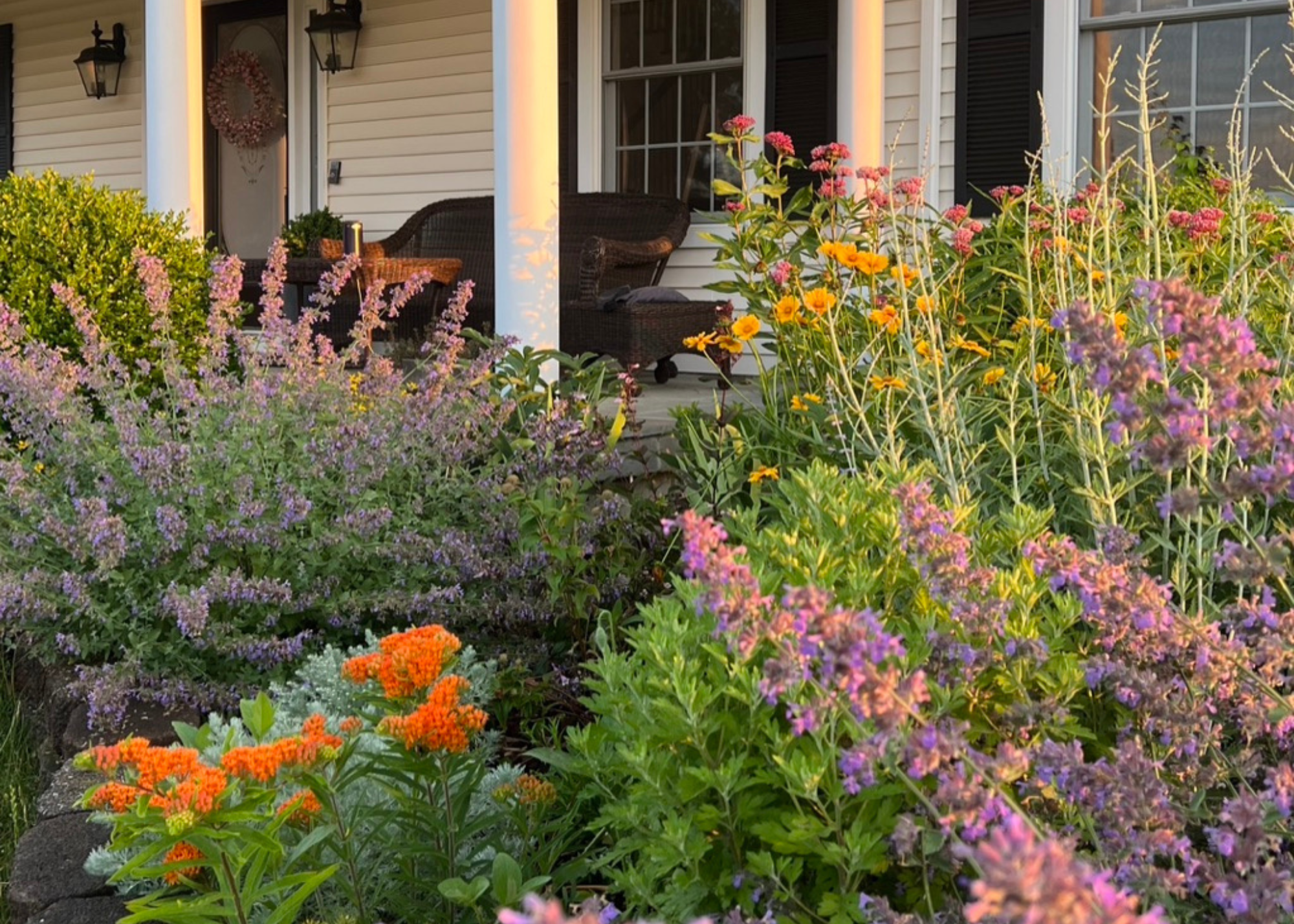
Embrace the chaos with a wildflower front lawn.
Central to a climate-resilient garden is, of course, the plants you include within it. Choosing a combination of local plants and species known to thrive under extreme conditions can help you design a garden that is both beautiful and resilient.
"One of the most important aspects is selecting the right plants," comments Mark Latchford. "As summers get hotter and droughts become more common, it's crucial to choose plants that are drought-tolerant and happy in full sun," he continues. "Verbena bonariensis, for example, is a brilliant option — it has tall, airy stems and delicate purple flowers, and it can thrive through long dry spells."
It is, ultimately, all about leaning into the unique environment of your garden and designing a space that fully embraces your surroundings. One aspect of this approach is highlighting local, native plants.
Katherine recommends, "Choose regionally appropriate or native plants that are already adapted to your local conditions. " However, she continues, "Remember to prioritize diversity — a mix of species is more resilient than a monoculture."
Having a rich, diverse variety of plants in your garden will help support the ecosystem and will benefit the local wildlife.
Mark Dwelly says, "To help wildlife, consider swapping some of your lawn for flower beds with lots of different plants and even a wildflower patch. These help wildlife, such as pollinators, do their job for Mother Nature, and tend to require less watering."
Looking to add wildflowers to your garden? We love this Wildflower Seed Shaker Twin Pack from Amazon.
Taking an intentional, thoughtful approach to your garden's design will be the key to achieving ultimate climate resilience. "Climate-resilience often goes hand-in-hand with sustainability, so it’s about working with the elements, not against them," says Mark Latchford.
FAQs
Where to Begin Creating a Climate-Resilient Garden
As with making big changes, knowing where to begin is often the hardest part.
"One of our favorite tricks is simply driving around the neighbourhood," suggests Mark Latchford. "See what’s thriving in other people’s gardens. If you spot lots of pines, for example, it probably means the soil is sandy and free-draining, which gives you a clue about what’s likely to do well in your own space. Established planting in your area is one of the best indicators of what will work long term."
Consider your surroundings the most helpful resource available. Take some time to observe your neighbors' yards, and take inspiration from what's working around you.
What to Avoid for a Climate-Resilient Garden
We've covered all the aspects you should be including in your climate-resilient garden, but what are the things you should be staying away from?
"It’s best to avoid water-hungry lawns and plants that aren’t used to our UK weather, like hibiscus," suggests Mark Dwelly. "These are extremely hard to grow and keep, and will use up a lot more resources for probably a fraction of the flowering time in the year."
Additionally, Katherine says, "When possible, avoid or reduce impermeable hard surfaces that increase runoff and heat—choose permeable materials instead. Pea gravel is a favorite of mine, or I’ll leave a wider margin between pavers for groundcover or gravel fill between larger stones."
And most importantly, as Katherine says, "Avoid planting in large single-species blocks— diversity = strength."
Although the climate crisis is ultimately not within the control of individuals, embracing these ideas is a smart way to regain some control over its direct effects on your life and your home.
If you're looking to bring this approach indoors as well, we've been inspired by these amazing sustainable homes, which prove that helping the planet doesn't have to mean sacrificing your style.

Maya Glantz is a Design Writer at Livingetc, covering all things bathrooms and kitchens. Her background in Art History informed her love of the aesthetic world, and she believes in the importance of finding beauty in the everyday. She recently graduated from City University with a Masters Degree in Magazine Journalism, during which she gained experience writing for various publications, including the Evening Standard. A lover of mid-century style, she can be found endlessly adding to her dream home Pinterest board.